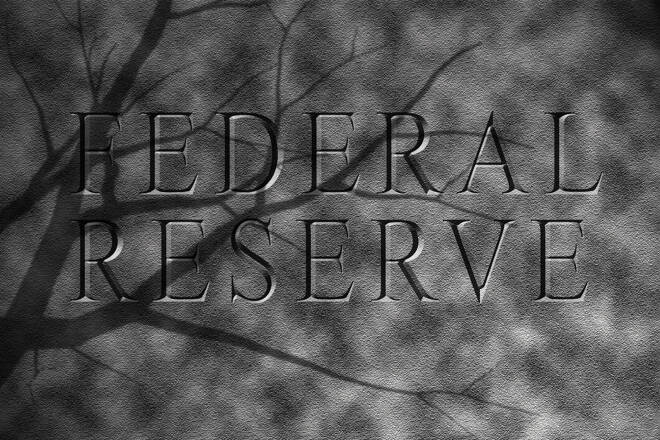Advertisement
Advertisement
Federal Reserve Will Temporarily Pause Rate Hiking Campaign
By:
Federal Reserve set to temporarily halt rate hikes as it evaluates economic impact.
Highlights
- Fed’s aggressive rate hike campaign to pause, evaluating economic impact.
- Fed Chair Powell emphasizes need for careful assessments before proceeding further.
- Anticipated ‘hawkish pause’ in June, signaling potential future rate hikes.
Overview
Fed Chair Jerome Powell and other central bank officials hint at the need to evaluate the broader economic impact of the previous rate hikes before proceeding further, as there are signs of inflationary pressures within the economy. Therefore, they expect to temporarily pause the Federal Reserve’s aggressive interest rate hike campaign, which has raised rates ten times over the past 15 months, at the upcoming meeting.
Fed Will Pause to Look at Data
The decision to pause the interest rate hikes comes as the Fed recognizes the significance of carefully assessing the evolving economic outlook. Powell’s statement during a Fed research conference in May reflects this sentiment, stating, “Having come this far, we can afford to look at the data and the evolving outlook and make careful assessments.” This approach aligns with the need to understand how tighter monetary policy is affecting the economy before making further adjustments.
Fed: Dissenting View is Expected
Notably, some more hawkish officials, such as St. Louis Fed President James Bullard and Cleveland’s Loretta Mester, have expressed openness to raising rates for the 11th consecutive time at the June 13-14 meeting. However, a dissenting view is expected at the meeting. This will indicate a potential shift from the previously unified votes over the past year. The economists surveyed anticipate a “hawkish pause,” with no rate hike in June but signaling an expectation of additional hikes in the future.
Economic Challenges Will Persist
Despite the anticipation of a pause, it is essential to recognize that the underlying economic conditions remain challenging. Inflation, although easing from its peak, remains at a level more than double the pre-pandemic average and above the Fed’s 2% target rate. Furthermore, the labor market continues to defy expectations for a slowdown, with unexpected job growth and a slight increase in the unemployment rate. These factors contribute to the Fed’s desire for additional time to monitor policy lags. And regional bank stress before making further decisions.
Limited Consumer Relief
However, it is important to note that a pause in the interest rate hikes does not necessarily translate into immediate relief for consumers. The impact of the Fed’s rate-hiking cycle has already influenced various interest-sensitive items. Credit card rates have reached an all-time high, with an average rate exceeding 20%. Mortgage rates have also increased significantly, impacting the purchasing power of potential homebuyers. Auto loan rates and federal student loan rates have risen as well, placing additional financial burdens on borrowers.
High Rates Won’t Go Away
While the pause in interest rate hikes may provide a brief respite, the current rates remain at historically high levels. Borrowing costs have increased dramatically and are unlikely to change significantly. Consumers should be prepared to manage their finances with higher interest rates in mind. Even as the Fed navigates the complexities of the economic landscape.
Opinion: Fed Will Pause Rate Hikes
It is my opinion that the Fed will pause its interest rate hike campaign at its upcoming meeting. This decision reflects the Fed’s cautious approach to evaluating the economic impact of previous rate hikes.
About the Author
James Hyerczykauthor
James Hyerczyk is a U.S. based seasoned technical analyst and educator with over 40 years of experience in market analysis and trading, specializing in chart patterns and price movement. He is the author of two books on technical analysis and has a background in both futures and stock markets.
Did you find this article useful?
Latest news and analysis
Advertisement
